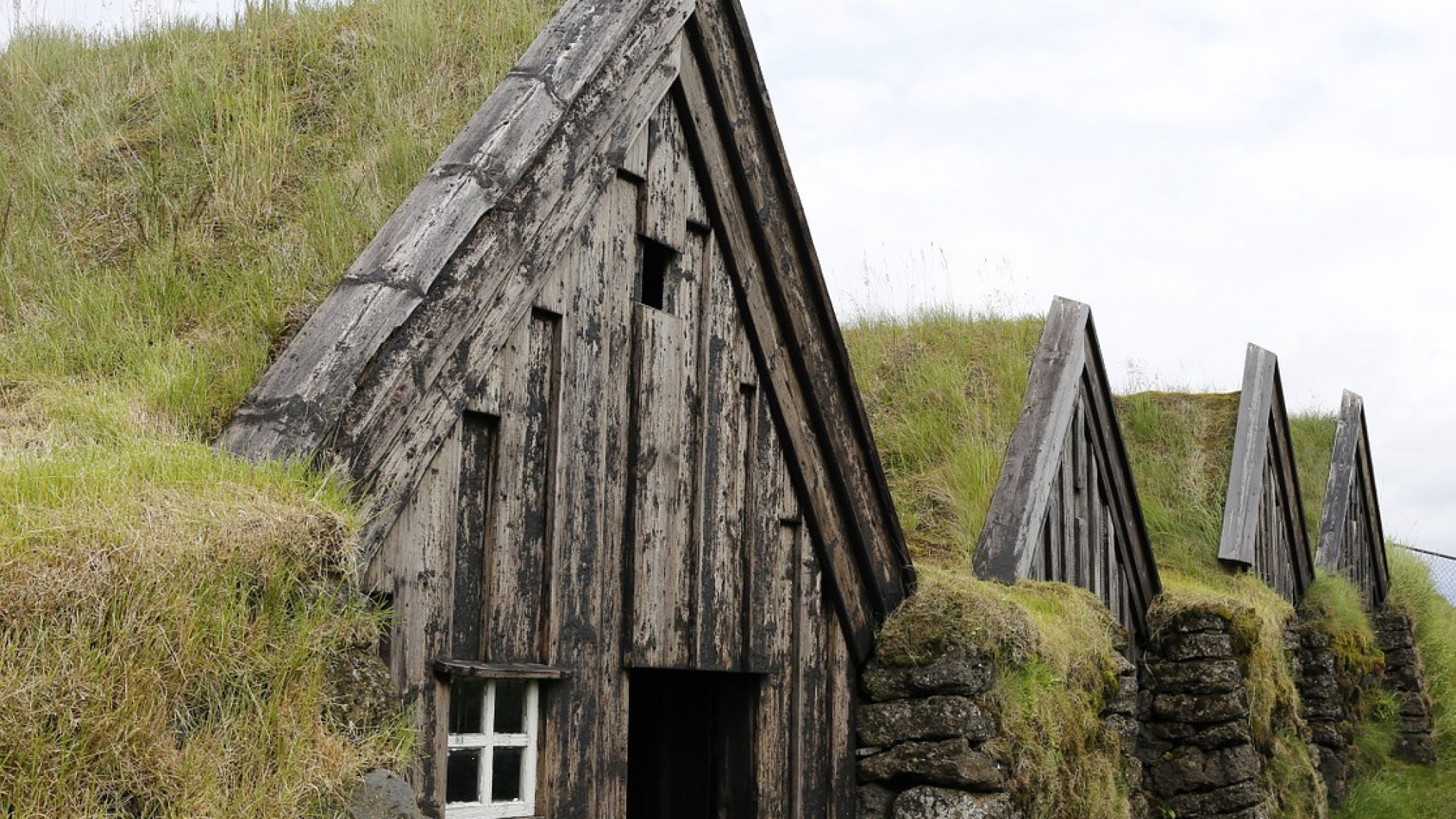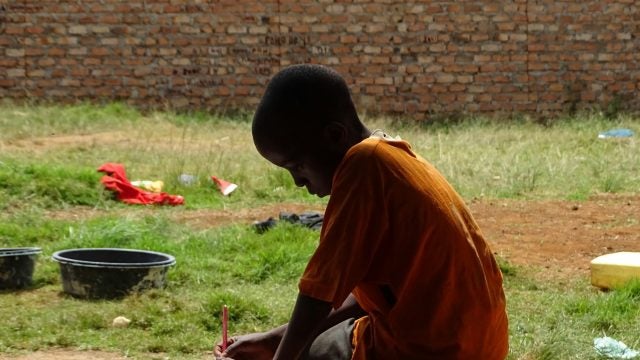
Title: PART I: Encounters of Humans and Hidden Powers in Sacrosanct Places
The below article is the first installment in a two-part series. This installment is titled “The Politics of Sacrosanctity and Elf Belief in Iceland.”
For centuries, Icelanders observed a set of rituals and rites in their relationships with certain hidden beings, often called elves (pl. álfar, s. álfur) or hidden people (pl. huldufólk). Icelanders took these rites of communication seriously because they allow humans to live in cohabitation with those supernatural beings without provoking their enmity. According to popular belief, “grave misfortune may befall those who disturb rocks, stones, cliffs and hills” that belonged to supernatural beings. Those popular rites—tradition or superstition—have not changed much throughout the centuries; rather, a belief in the imperative nature of respect for the habitat of elves and hidden people in Iceland persists.
Some Icelanders have often discarded these rituals as nonsense. This is as true today as it was in the mid-1800s. We know from Jón Árnason, the most famous collector of Icelandic folk tales, that those who afforded belief to the tradition of folk tales were bullied, despised, and even persecuted for giving credence to “lying tales.” Even so, the environmental effect of these rituals is clearly visible in the Icelandic landscape—most overtly around elf-dwellings, which are considered sacrosanct places.
The term “sacrosanctity” describes a religious dimension of material reality, similar to the term “taboo” and is generally concerned with the relationship between humans and superior, nonhuman powers. The notion of sacrosanctity prohibits disturbing certain things or places and bodes dire consequences if violated. This has certainly been the case with Icelandic elf-dwellings both in the past and present.
Thus, this ancient belief that influenced life in pre-industrialized agricultural society has found new channels throughout the twentieth and twenty-first centuries. Elf-stones, endangered by human enterprises, now make the headlines, occasionally drawing the public into urgent debates about the reverence of sacrosanctity and the relationship between humans and nature. This dialogue is more pressing nowadays than ever before due to climate change. The Icelandic belief in elves and hidden people still exerts considerable political agency—especially with respect to man-made transformations of the environment.
Sacrosanctity of Rocks and Stones, Cliffs and Hills
In Iceland, stones, cliffs, and hills are often said to be the homes of elves, hidden people, and even dwarves. Some claim that elves, hidden people, and dwarves are different from each other. For instance, some consider hidden people to be more like common folk and less stately than the elves. The elves, conversely, are of royal lineage, tall, graceful, and amazing, adorned in fine garments. However, a more careful study of the matter shows that there is not much distinction made in Icelandic folk belief between elves and hidden people. The same cliff or the same stone might just as well be dedicated to elves as to hidden people, depending on different sources.
The oldest Icelandic written sources about elves are found in the Poetic Edda, a key Norse mythology source that dates back to the thirteenth century. Icelanders adopted Christianity in the year 1000, but many mythical beings survived for ages through folk belief. However, most of what we know about the dealings of men with elves and hidden people comes from collections of folk tales from the nineteenth century. Many of these folktales tell the stories of humans who violated sacrosanctity by disturbing the dwellings of elves or hidden people. Such transgressions did not go unpunished; perpetrators fell ill, lost cattle, had strange accidents, contracted diseases, experienced financial misfortunes or personal losses, and even faced death.
Most folk tales about elves and hidden people urge humans to treat these beings amicably and politely. If treated well, they will prove reliable and generous neighbors. Due to these beliefs, ordinary people in their everyday lives strive to cultivate good relationships with their supernatural neighbors by respecting the sacrosanctity of their dwellings, sometimes even gifting elves with necessities like food.
These folk beliefs not only affect human behavior on an individual scale but also influence man-made environments. For instance, most Icelandic homesteads during the nineteenth and early twentieth centuries featured a sacrosanct area, such as an elven stone or an enchanted spot. This practice persists today and continues to affect the man-made environment on an even larger political scale than before.
Superstition’s Continued Impact on the Environment
In recent decades, stories about the transactions between elves and men are not only gathered in collections of folk tales—they also frequently make headlines. Such stories, often featured in Icelandic media, now mostly concern building projects or road constructions that have been upset by elves. As noted by folklorist Valdimar Tr. Hafstein as recently as 2003, “The legends that stick around in tradition relate how the elves wreak revenge on road workers, engineers, and even entire communities.”
One such tale tells the story of an elf hill on Álfhólsvegur, or Elf-hill Road, in Kópavogur, a municipality in the capital area of Iceland. The elf hill restricts a much-travelled two-way traffic street. The town council made three separate attempts during the twentieth century to remove the stone. During the first attempt in the late 1930s, all funds allocated to the project were suddenly depleted; some said that the elves had tampered with the municipality budget. A decade later, tools disappeared, and machines broke down. In the late 1980s, an attempt was made to drill a stone on the hill, but two drills broke during the endeavor. Again, elves received blame. Consequently, a decision was made to deviate from the official road plan and change the two-way street into a constricted one-lane street around the hill. This is how the road lies today, creating circumstances that greatly slow down traffic.
There is a similar case from only six years ago when a seventy-ton elf-stone was relocated—rather than simply demolished—during road construction in a relatively undisturbed lava field near the capital of Reykjavik. The media reported that the stone was an elven church and that protests by people advocating for the maintenance of the stone’s sacrosanctity caused its relocation. Consequently, the Icelandic Road and Coastal Administration (IRCA), assisted by an elf-seer, engaged in negotiations with the local elves. The two parties agreed that the entire stone would be relocated in one piece to another area of elf-dwellings in the lava field. On this occasion, IRCA staff were joined by the elf-seer, reporters from the main media outlets, and the author of this article to witness this enterprise undertaken on behalf of the elves.
The Politics of Sacrosanctity
Stories such as these are quite common in Iceland. In 2019, photographer Svala Ragnarsdóttir and I published Krossgötur, a book that features fifty-six sacrosanct places and their stories. Some of the documented places were purely of historical significance, but we found many by studying recent reports in the media and written and oral sources from the past few decades. All of these places had one phenomenon in common: any man-made transformation of, development to, or construction in the natural areas surrounding the sites were abandoned or adjusted on account of elf belief and the attested sacrosanctity of the sites.
Sacrosanctity is inherently political in Iceland because people disagree about the importance of superstition, myths, or other folkloristic material in the context of urban planning, the environment, society, the flow of capital, and politics more broadly. Nowadays, elf belief is almost exclusively expressed in terms of construction projects where nature is being transformed by humans. The sacrosanctity of natural sites spurs conversations about the value of nature, our environment, and the future of humans in nature. When a sacrosanct place makes headlines because it is endangered by a human enterprise, this reminds us that all changes to undisturbed nature are political. Considering how Icelandic elf belief continues to impact human interventions in nature has important implications for us today in the face of climate change. It forces us to think about the future of our environment and what nature will be passed down to future generations. In other words, our actions may spell fortune or doom.
. . .
Bryndís Björgvinsdóttir is a folklorist and Associate Professor at the Iceland University of the Arts. She also has written fiction for children and young adults and has authored books in the fields of folklore, design, and history. She was awarded the Iceland Literary Prize in 2015.
Recommended Articles

The 1997 hijab ban in Türkiye left lasting effects on Muslim women’s psychological, social, and religious identities, shaping their experiences across academia, bureaucracy, and politics. Evidence from interviews…

This article advances the idea that teaching children their mother tongues and learning adjacent national languages offers better prospects for consolidating nation-building and contributing to cultural preservation. Kenya’s case illustrates…

Despite the non-political positioning of its organizing body, the European Broadcasting Union, the Eurovision Song Contest plays an important role in shaping how the public imagines and understands ideas of…